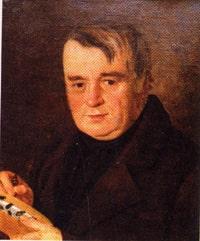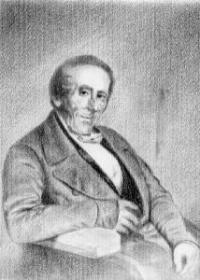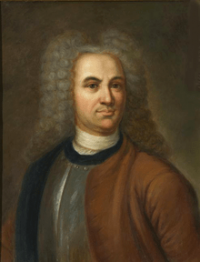You are here
Names of Kazakhstan Altai.



Sights of Kazakhstan Altai.
“A person should not complain about the times - nothing comes of this. It’s a bad time: well, that’s why man is to improve it”
Carlyle Thomas.
Hiking in Kazakhstan Altai.
The geographical names of mountains, rivers, tracts, villages almost always carry a history, sometimes instructive or entertaining. They keep the memory of the peoples living here, events, the nature of the area, climate and various other features.
For example, the names of many rivers and small rivers speak for themselves which they are: slowly flowing, calm, lazy, or, conversely, fast, jumping over stones with noise and ringing, muddy or crystal-clear: Thunder, Poskacha, Zvonchik, Bystukha, Tikhushka, Mokhovushka, White, Draft.
Some names have been preserved since ancient times and still keep in themselves the memory of peoples living in ancient times more often of Turkic or Mongolian origin. Many of them bear traces of dominion until the middle of the XVIII century, the Mongol tribe Dzungars.
These include the name of Lake Zaysan. This word still exists among the Altai people and means the head of the clan, prince, leader. This was said back in 1736 by the Russian scientist V. Tatishchev, who wrote an extensive work entitled “A General Geographical Description of All Siberia”: “... the Kalmyks of Nur-Zaysan are named Lake General for greatness”.
The Turkic word “Altyn” is guessed in the name of the Altai mountains and then “Altai” sounds like golden mountains. The word "Bukhtarma", the author of the dictionary of the Great Russian language V. Dahl interprets as "mezdra" - a rough underside of unpainted skin. It is quite possible this concept carries an echo of the craft of the local ancient population (Tatars) living in these parts, and engaged in leather dressing.
At the same time, translated from the ancient Turkic phrase “Buk-tyrma” means a place convenient for an ambush and, possibly, associated with tribal wars or robberies occurring here before the beginning of our era.
There are three rivers in Altai having the same name Khair-Kumyn. All of them flow down from the slopes of the Kholzun ridge (two in Russia) and translated from Altai (Kalmyk) mean "young, hot dzhigit." Already in the XXth century, the transcription of this word became the name of the well-known Hamir River, which flows into Bukhtarma.
Obviously ancient origin has the name of the Turgusun River. Knowing the translation of the first part of the word, it is easy to guess that the second part means Kazakh “su” and then the whole word sounds like “fast water”.
There is a quiet rivulet in the village of Shumovsk, called Lazarikha, despite the fact that the water in it is by no means azure. And the secret is simple. Travelers of the 19th century mention it, calling it “Laz Su,” which is translated from English as “muddy water,” and this is what the Russians remade it into Lazariha.
In general, with the appearance of the Slavic population in the region from the beginning of the XVIIIth century, many geographical objects received Russian names. Interestingly, the ancient names in many cases have not been preserved. And whether they were - science has no information on this score.
Seeing the snow-capped tops of the mountains, the Russians immediately christened them squirrels, and this name was firmly fixed in the names of the mountains even without eternal snows: Ivanovsky Squirrel, Passing Squirrel, Solovievsky, Linear, etc.
Smaller mountains often carry features of relief, outlines: Ostrukh, Studenyukha, Shchebnyuha, Soft Fat Woman, Slot, Dead Head. The stone tops of the mountains in Altai are usually called “shishas” (Kirsanov shish), spiers, and rocks along the river banks - bulls and cheeks.
Obviously, the first Russian settlers primarily paid attention to the quality and fertility of the land and soil. Hence the initial names of the villages are "Earth" (Nikolsk), "Myagonkaya" (Solovievo), "Verkh-Myagonkaya" (eliminated in the 60s).
In 1792, the untiring master Lavrenty Fedenev, on the instructions of his superiors, made a "painting" of the villages of the Bukhtarminsky tract and fugitive people hiding in them. From it we can conclude that even then villages and rivers had firmly established Russian names.
Most of the 20 masons noted, as the fugitives were then called, received the names of the first settlers. It is interesting that they often guess the names familiar to the Zyryanovites: Tikhonov, Vyatkin, Klepikov, Arkhipov, Sizikov, etc.
In particular, we learn from the mural that the village of Bykova was founded in 1785 (seven years earlier by Zyryanovsk) by the runaway dragoon of the Ust-Kamenogorsk fortress Ivan Bykov, who has a "wife with two children." At the village of Berelyaska (Berel), Ivan Kolmakov from the peasants of the Biysk settlement with his sister, wife and children lived for nine years.
And the memory of him has been preserved to this day in the name of the river Kolmachikha, flowing down from the nearby mountains. K. Ledebur, who traveled in these parts as far back as 1829, wrote about the origin of the name of the village of Pecs, “the name of Pecs is due to the fact that cattle or wild animals ate several caves in the salt marsh soil of the immediate vicinity,” resembling stoves”.
It is true or not, but when you approach the village you really see niches on the right bank of Bukhtarma, which are vaguely reminiscent of the openings of Russian stoves.
In 1807, the bailiff (head) of the Zyryanovsky mine P.K. Frolov, who, by the way, did a lot to equip the mine, to note the merits of mine workers who discovered many deposits in the district, ordered to rename some settlements in their honor.
So the name of Matvey Snegirev, who discovered the field, called Snegirevsky, received a volost village on the shore of Bukhtarma, previously called Mill Keys. According to established tradition, the mines later received the names of their discoverers: Maleevskoye in honor of the surveyor Maleev (1810), Sazhaevskoye (1811), Grekhovskoye (1817), Zavodinskoye (1818), Putintsevskoye (1820).
An interesting and even funny story is the name of the village of Borodino. A village arbitrarily populated by peasants in a convenient place for tillage near the Cheremshanka River, was ordered to be demolished by the order of local authorities as illegal.
Dissatisfied peasants in 1818 sent walkers to Barnaul, the former center of the lands of the Mountain District. Perhaps they had their hopes in Frolov, who by that time had become the head of the Kolyvano-Voskresensky plants (including the Zyryanovsky mine and factory land).
And their hopes came true. Clever Peter Kozmich knew the land and his needs well and willingly went to meet his fellow countrymen. However, the name of the village “Cheremshanka” was canceled, since only 15 km on the banks of the Irtysh there was a Cossack redoubt with the same name.
Looking at the red beards of the walkers, he immediately ordered to name the village of Borodino. Undoubtedly, in those years, the name of the village of Borodino, where a decisive battle with Napoleon recently took place, was rumored.
Honoring and then was already in use. In 1821, a village was founded, named after the reigning emperor Alexander 1, "Alexandrovka." And here is another interesting word "Stone". In the 18th century, they designated a corner along Bukhtarma behind the stone mountains, where fugitives hiding, hiding from the authorities, hid.
However, the word is not at all local. Recall that the Ural Mountains in those days were called the "Stone Belt". The origin of this name is not difficult to understand, given that in plain Russia, which has almost no rocky outcrops, any mountains were associated with us, and therefore they called it: stone.
Authority:
Naturalist writer, photo artist, local historian Alexander Lukhtanov.







